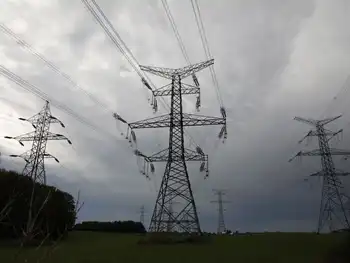Regulators to rethink Idaho Power green tags
By Associated Press
CSA Z462 Arc Flash Training - Electrical Safety Essentials
Our customized live online or in‑person group training can be delivered to your staff at your location.

- Live Online
- 6 hours Instructor-led
- Group Training Available
The commission announced the decision after some of the utility's biggest industrial customers renewed objections to letting Idaho Power retire the so-called green tags, arguing that customers deserve any kind of rate break from revenue earned by selling the credits on the open market.
The commission issued an order on January 28 allowing Idaho Power to hold on to the credits, a decision utility officials say enables the company to show renewable energy watchdogs and customers it's meeting expectations to invest or generate power from renewable sources like wind or geothermal.
Idaho Power stockpiled more than 320,000 credits in 2007 and 2008, according to the commission. The credits were earned directly for every megawatt-hour of power generated at the Elkhorn Wind project in eastern Oregon and the Raft River geothermal project in southern Idaho, commission staff said. The company also has a program for customers to pay extra on their monthly bill to buy renewable energy.
Company officials say the decision to take the green tags off the market enables Idaho Power to publicly tout its commitment to renewable energy, outweighing the short-term benefit selling them might have for all customers.
"We do recognize that in this sort of situation, we've got a couple different interests," said Karl Bokenkamp, general manager of power supply, operations and planning for Idaho Power.
"By keeping the tags, we can represent to our customers in fact that we are delivering renewable energy to them," he said.
Under rules governing the credits, utilities can sell them through brokers to other utilities or chose one of two methods for keeping them. Rick Sterling, of the Public Utilities Commission, says a utility can hold on to the credits in hopes they can be used in the future to help meet renewable energy standards, or the can opt to retire the tags in perpetuity.
Retiring the tags allows a utility to promote green energy in literature to customers and investors, a process strictly monitored by consumer protection groups like the San Francisco-based Green-e Program.
"They want to be able to promote these green projects," Sterling said. "But they can't really say anything about them until they actually retire the credits."
The company's plan has the support of some conservation groups. Betsy Bridge, energy efficiency associate with the Idaho Conservation League, says Idaho Power might also be able to use the credits in the future to help meet renewable energy portfolio standards that could be imposed by the state or federal government.
But not all Idaho Power customers think holding or retiring the credits is the best policy.
The Industrial Customers of Idaho Power, an organization that includes the J.R. Simplot Co., and other big power customers, contend the tags should be sold and the proceeds turned into savings for all Idaho Power customers.
Peter Richardson, the group's attorney, claims the tags have a short shelf life, rendering them useless to help meet any future government portfolio mandates.
He also argues that the tags are a form of property that should be used to benefit customers.
"It's image advertising," Richardson said. "And how much of ratepayer dollars should go for the corporate image advertising campaign? The ratepayers have created this value to the company... and they should get their money back for it."
In its decision to reconsider the Jan. 26 order, the commission is asking parties to provide written comment on several issues, including:
• The shelf-life of held credits and related federal guidelines for their future use.
• Updated monetary value of the tags if sold on the open market.
• Whether retiring the tags to use the credits to promote Idaho Power as green friendly is image advertising.
The commission has also scheduled a hearing for oral arguments April 22 in Boise.











